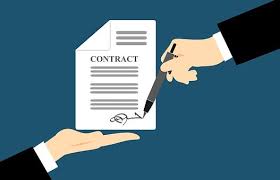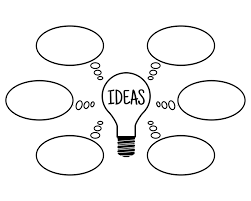
So You Have A Product Idea, So What? Can You Even License It?
According to Licensing International (licensinginternational.org), an organization that serves license holders: “Global sales revenue generated by licensed merchandise and services grew to us$ 315.5 billion in 2021, a 7.75% increase over the US$ 292.8 billion generated in 2019, Industry royalty revenues increased 10.6% to US$ 17.4 billion.”
As you can see, the licensing industry grew at a tremendous rate despite the pandemic. But what exactly is licensing or product licensing to be more precise? Here’s its definition:
“Licensing involves obtaining permission from a company (licensor) to manufacture and sell one or more of its products within a defined market area. The company that obtains these rights (the licensee) usually agrees to pay a royalty fee to the original owner.”
This is the definition given by Info Entrepreneurs (infoentrepreneurs.org), an arm of the Montreal City’s Chamber of Commerce. In short, with licensing, you only need to be the legal owner of a product idea in order to make money off it.
JUST WHAT TYPE OF LICENSED MATERIAL IS THIS ARTICLE ALL ABOUT?
 There are many things that a person can license to a licensee in exchange for money. For example, a writer can license their book or certain parts of their book which includes words and phrases.
There are many things that a person can license to a licensee in exchange for money. For example, a writer can license their book or certain parts of their book which includes words and phrases.
Another example would be brand licensing where a licensor licenses their brand intellectual property to a licensee. These brand intellectual property could be the company’s name, logo, characters and so on.
However, this article would just discuss the topic of licensing physical products/inventions which are undeniably more difficult and more expensive to implement as compared to products that are only intangible by nature.
Why are physical products and/or inventions more difficult to implement? This is because making a physical product is for example more difficult than just writing a book which can be done with ease using any digital device. You need tools to make a physical product.
Why are physical products and/or inventions expensive to implement? This is because if you want to prevent others from illegally copying your product or invention, you need to file a patent for it and this could be very expensive undertaking.
IS LICENSING NOVELTY PRODUCTS OR INVENTIONS EASY?
 This should be your first foray in the world of licensing just so you would have a real world experience in the world of licensing without spending a lot of effort and money first. But what exactly are novelty products and inventions?
This should be your first foray in the world of licensing just so you would have a real world experience in the world of licensing without spending a lot of effort and money first. But what exactly are novelty products and inventions?
There are a lot of novelty inventions in the world of toys and cheap household products. For example, you might have designed a teddybear which also doubles as a piggybank. This is a novel invention whose design can easily be worked around by other inventors.
But as you can see, the concept of the teddy bear that doubles as a piggybank is not hard to design. You also at the most need a cheap provisional patent application which for example costs about US$ 100.00 in the United States and you are ready to license this.
Then, all you have to do is to pitch it to toy companies for licensing deals. It is a well known fact that at least for the American Toy Industry, they encourage independent toy inventors to pitch their toy ideas for them for possible licensing deals.
As you can see, there exists an ecosystem for the United States at least which encourages independent inventors to pitch to certain industries for licensing deals. As far as I know, the US industries that aggressively encourage inventors are the toy, kitchenware and tools industry.
HOW DO YOU CONTACT COMPANIES FOR LICENSING DEALS?
 I suggest you watch a couple of YouTube videos from the InventRightTV YouTube Channel. If you must know, InventRight is a US company that provides education and assistance for inventors who want to license their inventions to companies.
I suggest you watch a couple of YouTube videos from the InventRightTV YouTube Channel. If you must know, InventRight is a US company that provides education and assistance for inventors who want to license their inventions to companies.
The YouTube channel has videos of successful inventors who have managed to license their ideas to companies. One thing to note though is that the videos are predominantly for the American market but the InventRight participants come from all over the world.
If you sign up to their website which is inventRight, you would gain access to their database of companies accepting licensing applications from independent inventors.
You can also try searching first online. For example, you can Google the keywords: “companies that accept invention ideas” and Google would instantly give you lists and articles of such companies.
If you actually did Google search for such companies, you would notice that almost all of the companies mentioned by Google are US based companies. You might have to do more in-depth online search if you are looking for companies not based in the US.
WHAT IS THE BIGGEST HURDLE OF INVENTORS OF MAJOR INVENTIONS?
 Major inventions can be simple or complex inventions, but one thing that separates them from novelty inventions is their capability to greatly disrupt human society. For example, the previous example of the novelty invention which is the teddy bear which doubles as a piggybank.
Major inventions can be simple or complex inventions, but one thing that separates them from novelty inventions is their capability to greatly disrupt human society. For example, the previous example of the novelty invention which is the teddy bear which doubles as a piggybank.
This is a novel invention because it is not a hard idea to think about and is not a need by society as a whole. There are for example many other toys, boxes, containers and so on which can double as a piggybank.
But what if your invention is a flying car? This is considered a major invention because it has the capability to disrupt society and the way humans live. For such inventions, you need not only one patent but you might need several patent applications just to protect your invention from being copied and counterfeited.
For example, a typical patent filing cost for a simple mechanical invention in the US is between US$ 8,000 to US$ 12,000. Do you as the inventor have that much money to begin with?
Also, if your patent is infringed by someone, you would need to spend several millions of dollars over the life of the court case just to prosecute the infringers. This is the reason why many inventors go bankrupt in the first place.
ARE MAJOR INVENTIONS HARD TO IMPLEMENT AND LICENSE?
 But don’t despair. Despite the obstacles of having to file an expensive patent application, US$ 8,000 to US$ 12,000 for example is not an entirely impossible amount of money that can be raised.
But don’t despair. Despite the obstacles of having to file an expensive patent application, US$ 8,000 to US$ 12,000 for example is not an entirely impossible amount of money that can be raised.
But assuming you do raise the money, what about the other expenses? Let’s go back to the flying car example. Not all inventions work or are perfect for commercialization at the first try, often, you need to create many prototypes before you perfect it.
Making many prototypes cost money especially if you are not the only one working on it. For example, you would need a factory/office, workers, tools and so on. All of these cost time and money to start and implement. Can you still create a working invention despite this?
Next comes the licensing part. As an example, let’s look at ride hailing company Uber. Did you know how many times the company was rejected by investors before they became successful in signing an investor? They were rejected almost 600 times!
Finding investors is similar to finding licensees. The odds of finding an investor or a licensee could be hundreds or even thousands to one. Are you still hopeful of finding licensees despite the overwhelming odds of rejection against you?
BUT WHY ARE THE ODDS OF REJECTION IN LANDING A LICENSING DEAL SO OVERWHELMING?
 There are many reasons why companies would reject your pitch for a licensing deal. For example, many companies have survived/thrived by stumbling on a winning formula and are not welcoming of any ideas/invention that would disrupt their success.
There are many reasons why companies would reject your pitch for a licensing deal. For example, many companies have survived/thrived by stumbling on a winning formula and are not welcoming of any ideas/invention that would disrupt their success.
You must also understand that it is not easy for companies to raise capital everytime they undertake a new project. Manufacturing and selling a new product are expensive undertakings. A company might need to buy new equipment or hire new workers for your invention product.
Another thing you should consider is that business owners are very busy people. Business owners don’t only run their company but are also constantly looking out against their competitors, new industry developments and so on. They might not have time for new things.
It is also to be noted that every new product introduced to a company’s consumers is always an expensive gamble that may not pay off and end up costing the company a lot of money. For example, Coca-Cola Company lost a lot of money when they introduced “New Coke”.
You might have also not realized that the company you’re pitching your invention to is already creating a similar invention to yours. Their invention might even be better than yours because they have already years or even decades of experience producing similar products.
WHAT SHOULD YOU CONSIDER FIRST BEFORE DEVELOPING A PRODUCT/INVENTION WITH THE INTENT OF LICENSING IT?
 There are many things you need to consider but here are a few. First, Ask yourself: Is there a demand for your product? If so, is the demand enough to make it commercially viable for licensing deals?
There are many things you need to consider but here are a few. First, Ask yourself: Is there a demand for your product? If so, is the demand enough to make it commercially viable for licensing deals?
Licensors typically get 3% to 8% of royalties on either the gross or net profit of their invention. Ask yourself: Will the royalties I would receive from my product/invention worth the cost of patenting, developing and all the other costs of licensing my product/invention?
Second, Ask yourself: Are there already other competing products to my product/invention? How are they financially performing in the market? What’s their market share? Can I steal market share from them? Are there cheaper alternatives to my product/invention?
Third, Ask yourself: Are you prepared to start your own company if need be just in case no one licenses your product/invention? This is a very real reality. There are licensees that first require a licensor to set up their own company and sell their product/invention themselves.
Fourth, Ask yourself: Am I prepared to experience several hundreds and even a thousand rejections from companies if I pitch them my product/invention for licensing? Am I willing to spend money and time on something that may result in nothing?
CONCLUSION
 Although many licensing coaches like to portray that licensing a product/invention is easy, the cold and hard reality is that it is very hard to land a licensing deal. You might face hundreds and even a thousand rejections and still get no licensing deals.
Although many licensing coaches like to portray that licensing a product/invention is easy, the cold and hard reality is that it is very hard to land a licensing deal. You might face hundreds and even a thousand rejections and still get no licensing deals.
This is the reason why you have to verify first that your product/invention is really worth licensing. Put yourself from the perspective of a licensee who would have to assume all the risk including financial in order to bring your product/invention successfully to the market.
Your licensee has everything to lose while you stand to do nothing but to collect your royalties if your licensee somehow manages to make your product/invention successful in the market.
You might also like to read the article:

Perhaps You Need To Retrain Yourself And Retail Rather Than Invent
I have a lot of invention ideas in my head and have even studied about the patenting process and have even created a few crude prototypes of some of my invention ideas. Looking back now, I wish I had studied the invention process before proceeding to act on my invention ideas...